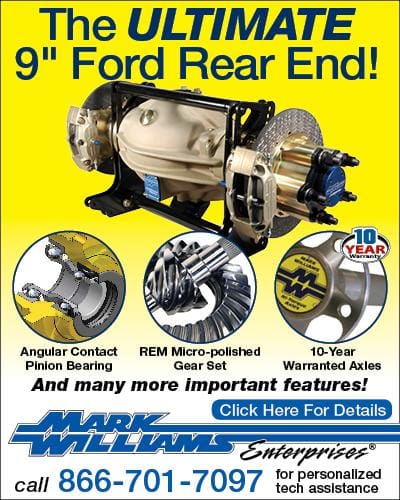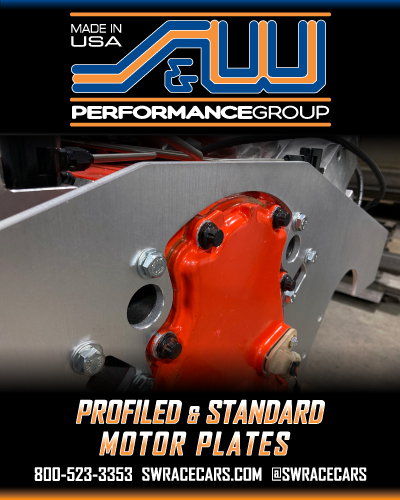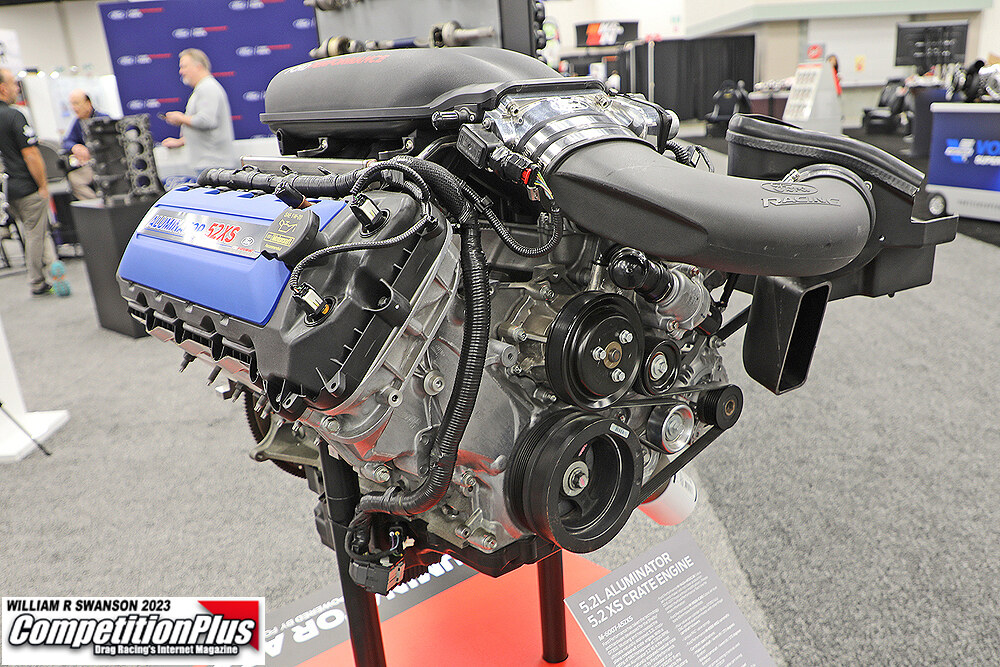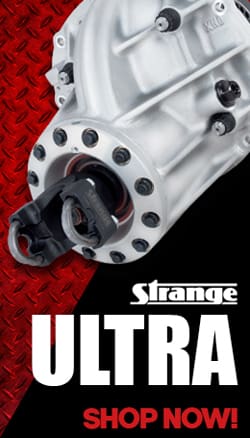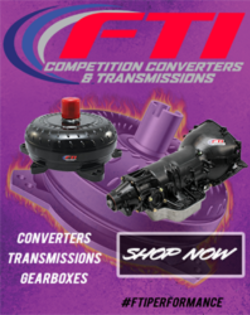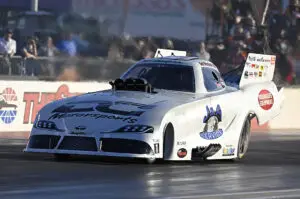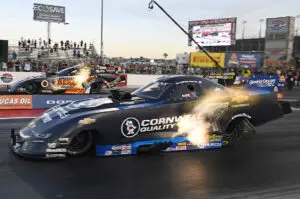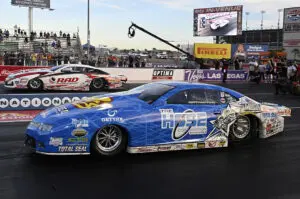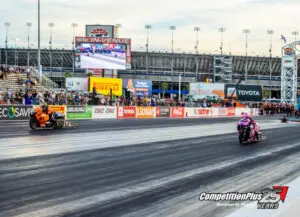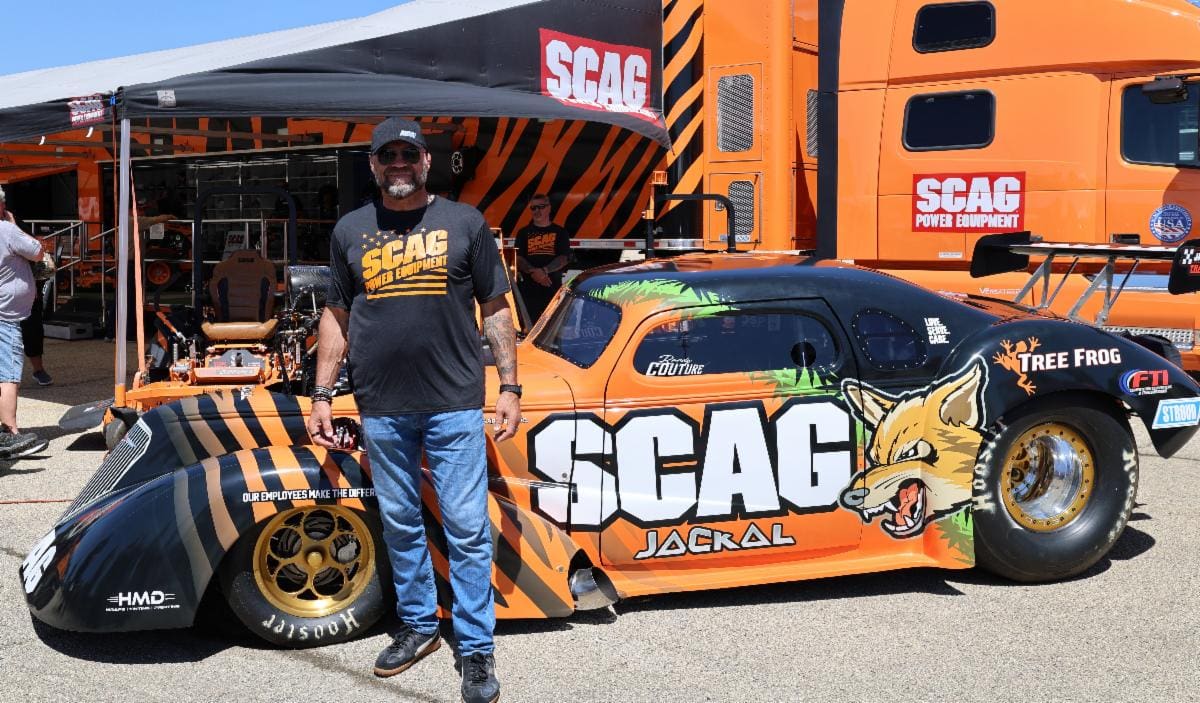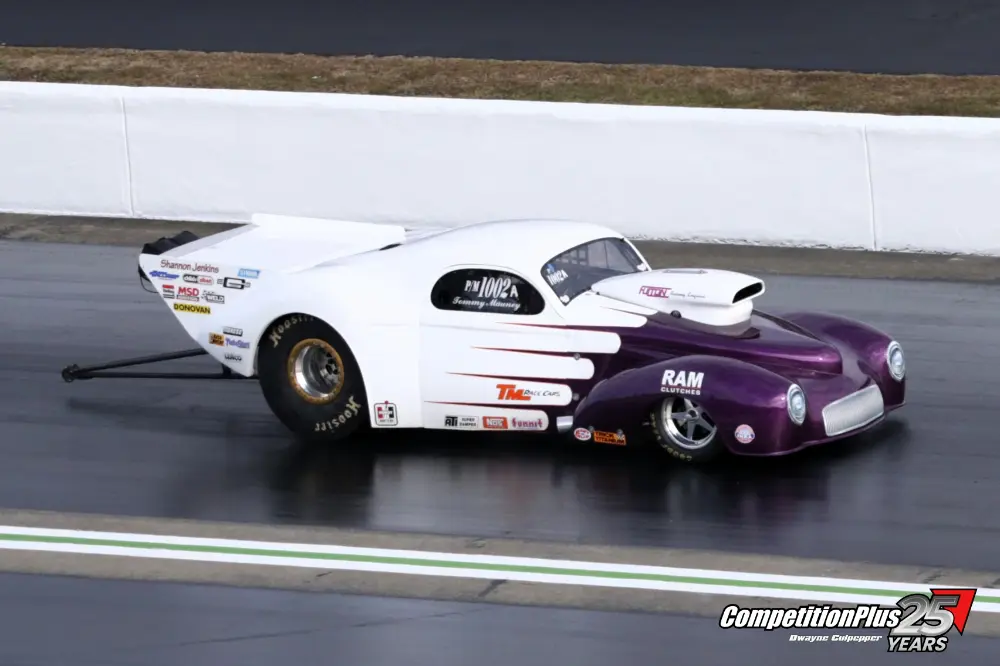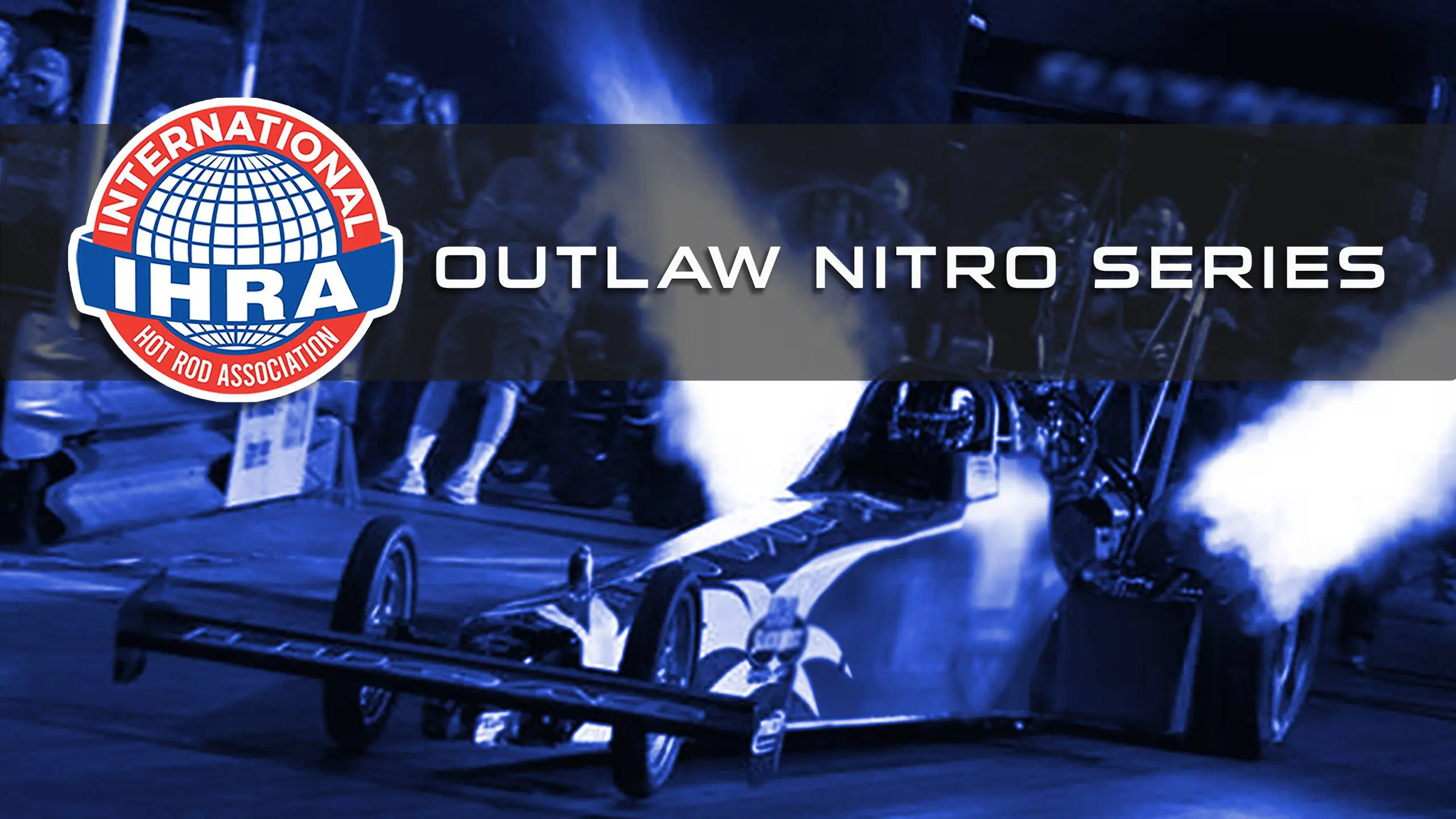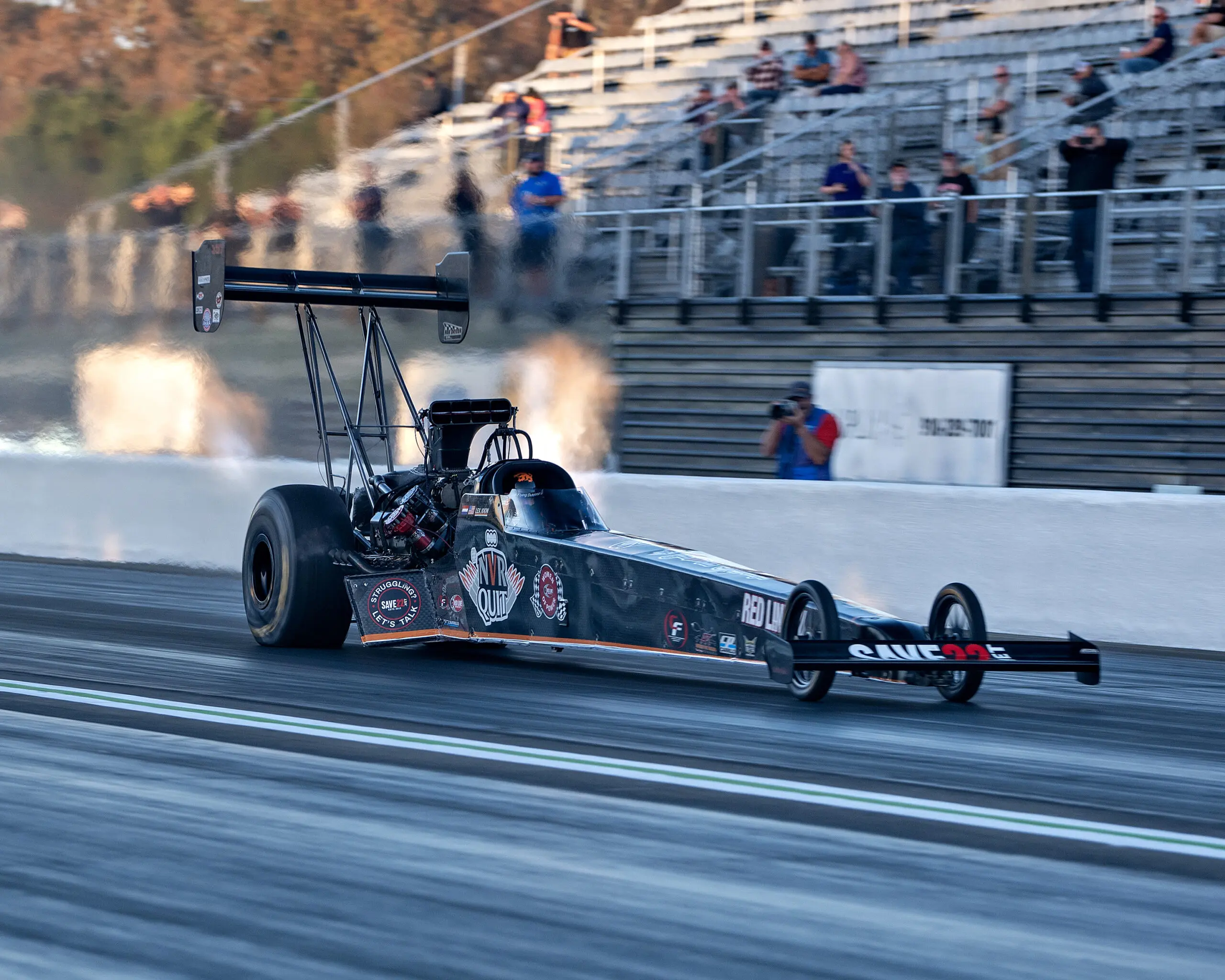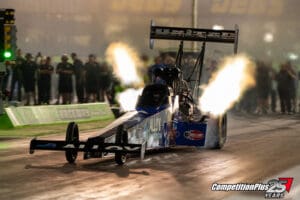Doug Foley ended Friday night’s Top Fuel qualifying session at Darana Raceway with the same position he last held nearly two decades ago. His 3.805-second pass at 321.66 mph earned him the No. 1 seed for Saturday eliminations at the fourth stop of the IHRA Outlaw Nitro Series, edging IHRA first-timer Jasmine Salinas, who clocked a 3.844.
The run placed Foley in familiar but long-absent territory. His last top qualifying effort came in 2007, when IHRA shortened its San Antonio event to an eighth mile due to shutdown issues, and he came away with his first career No. 1 qualifier. That memory surfaced Friday as he tried to recall the last time he stood at the top.
“It was an interesting one,” Foley said of his day. “To go out there, we had confidence that we could do well. And we had a mechanical failure first round and I apologized to anybody that I messed the track up on for quite a while, but we just had to forget about it. We had put a new bullet in it, forget about it, go up there. We know we’re a good team, we know we’re capable, but Darryl’s got this vision and that vision keeps bringing more cars, so it makes it tough on us.”
Foley’s comments reflected both relief and realism. Mechanical failures can end qualifying early in IHRA’s two-run format, where one misstep can mean missing the show. By recovering in the second round, his team not only stayed alive but set the standard for the field.
“It’s the advantage and the fun of two runs,” Foley said. “But it’s definitely nerve-racking, especially when you have these sponsors at Alloy Employer Services and United Garage Door. This is their hometown. So they love me racing here, I love racing here. And a number one sure doesn’t hurt.”
The result carried added meaning because of the location. Columbus is home to both of Foley’s major backers, and the chance to perform in front of them highlighted the personal connection between racer and sponsor. For a part-time operation, delivering results where sponsors are watching is as valuable as the qualifying position itself.
Behind Foley, the ladder was packed with talent. Salinas impressed in her IHRA debut, slotting into the No. 2 spot with a 314.69 mph pass. Reed, who returned after a crash at Seattle left him with hand injuries, was third at 3.854 and 322.81 mph. Krista Baldwin, Lex Joon, Todd Paton, Mitch King and Larry Dixon Jr. filled out the order. Foley will meet Dixon in the first round, setting up a match between veterans with vastly different paths to the starting line.
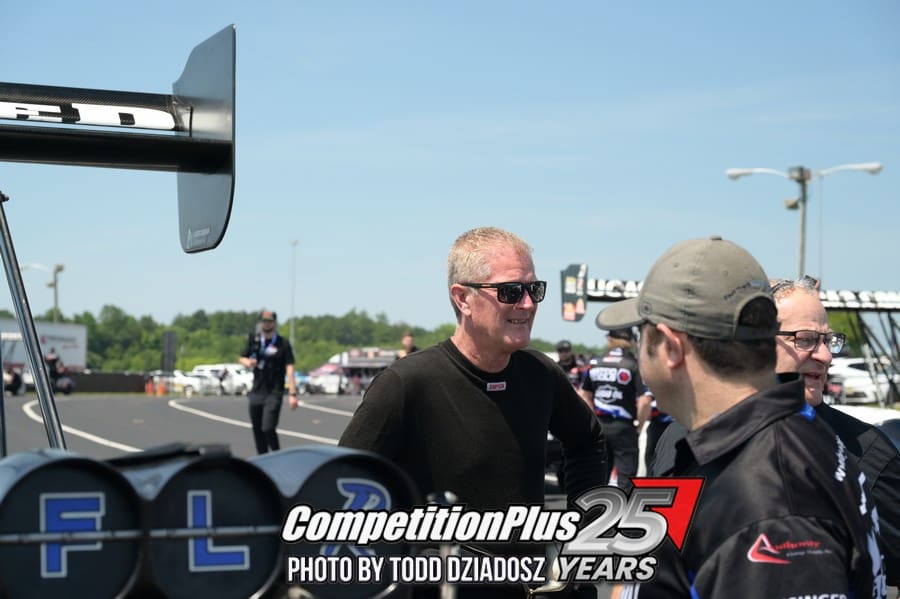
When asked if he remembered his last No. 1, Foley admitted he didn’t remember San Antonio, personal history he should have remembered. Foley’s focus turned from personal history to the broader picture of IHRA’s revival. Foley said the new direction under IHRA owner Darryl Cuttell has given part-time and independent teams something they have long lacked — a meaningful stage.
“A lot of people don’t understand that we put the same effort in that the Kalittas do and all these other great teams,” Foley said. “But we don’t get the notoriety, we don’t get the ability to run for points. We don’t get some of those opportunities. And so Darryl is giving these smaller teams, and even medium-sized teams, the opportunity to feel like first that they’re appreciated. Secondly, that their competition matters. And it’s just an unbelievable opportunity.”
Foley noted that the possibility of running for a championship points fund in 2026 has changed the outlook for many independent teams. “Like I was saying to you this morning is the possibility of running for points next year,” Foley said. “We never wake up on January 1st saying we’re going to run for points. We can’t do that, we just can’t afford it. But over here it’s obtainable.”
The question of whether smaller teams can compete on even footing drew a clear response. “Yeah, I think so,” Foley said. “And I think we’re going to get some of the bigger teams over here. Maybe just testing, maybe not necessarily all time for points. But a team like myself and Palmer and Krista, all these teams that are great teams, I think we’re going to be battling it out until next November and I think it’s going to be a lot of fun.”
Foley said his previous IHRA experience gave him a head start compared to some of the newer entrants. He pointed out that the series carries a sense of familiarity for teams who have raced here before.
“Well, most of them I had a little bit of a leg up on because I ran the IHRA for quite a while and I knew what we were doing,” he said. “But it’s just great to have that. It’s got the exact same feeling as it did then. You can compete here, you can be the team that you want to be. You want to be able to make it to the semis and go to the finals and show your sponsors value. Hard to do when you don’t have $5 million. But here, you can come here with a reasonable budget, be competitive. The fans appreciate. They come in the pit area. It’s just a totally different feeling.”
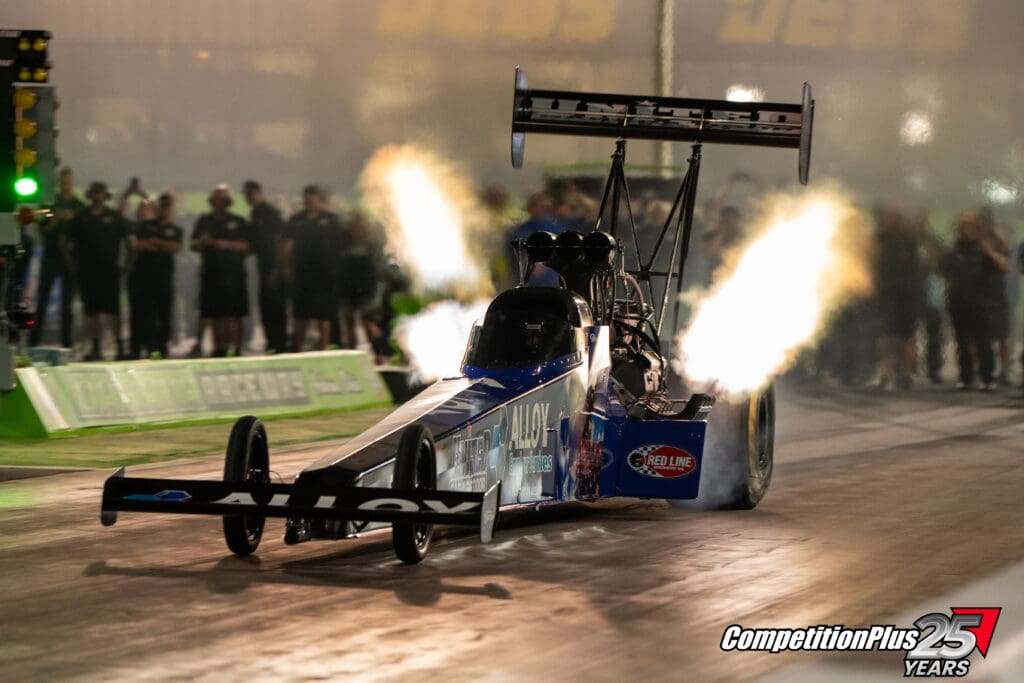
For Foley, that environment matters as much as the on-track numbers. The series has rekindled the spirit of competition for many who might otherwise sit out.
“Well, absolutely,” Foley said when asked about team morale. “That’s a long time for number one. So when you look at it, the ability for my team, these guys work their butts off and they all have day jobs. This is not full-time, everybody comes to the shop. And they need that momentum. They need to feel gratified and feel like they’re important. And you can do that over here.”
He added that camaraderie among the teams is evident.
“And the good part is I’m standing in the lanes, but Scott Palmer talking about, ‘This guy could bump us out, this guy could do this, this.’ And it’s truly that we all truly care about each other, all of the teams,” Foley said. “We don’t want to see them not qualify, but we all as a group have to get better and be able to run a competition here that is great for the fans. And we also need, we owe Darryl something. He’s invested a lot to give us a place to show off our talents. And we feel like he’s going to keep investing, and I can guarantee you my team’s going to keep investing.”
It’s hard to imagine a sport that is so expensive inevitably focuses more on a trophy than money.
“It would be great [to win one],” Foley said. “It goes back to the gratification that your work means something. I’ve been back for five years now. We’ve gone to two final rounds, but we haven’t won a trophy. And to be able to do that and take it to another level…”
Foley paused before steering the moment toward perspective, reminding his peers that racing exists alongside life’s harsh realities.
“We love the sport and it’s a lot of families that get to travel,” he said. “But when you’re here at the track, you have to take things in perspective. You’re extremely lucky to be here, okay? My best friend’s wife is literally not doing well. Okay? I mean, real bad. And when you see that, it makes me so emotional to think that there’s nothing we can do to help that great beautiful woman, but we get to enjoy life here. We get to do this. And that’s something that really just hurts the heart. Cancer sucks and we just appreciate every day.”
For seasoned racers who have seen eras rise and fall, Foley’s words carried the weight of experience. The No. 1 qualifier was a personal victory, but also a reminder of what binds the community together in IHRA’s new era. “Shoot, man, we’re drag racing,” Foley said. “That’s how it is.”















